Backstroke swimming stands out among competitive strokes for its unique position—performed on the back with the face always above water. This distinctive feature makes it a favorite for beginners and experienced swimmers alike. Unlike freestyle or butterfly, backstroke allows uninterrupted breathing, reducing anxiety for those new to aquatic sports. At the same time, elite athletes rely on it for speed and technical precision in races. As one of the four official competitive strokes recognized by FINA, backstroke swimming plays a crucial role in both individual events and medley relays.
Moreover, backstroke swimming offers excellent full-body conditioning. It engages the shoulders, core, glutes, and legs through continuous, rhythmic motion. The alternating arm pull and flutter kick create a balanced workout that builds strength and endurance. Because the spine remains aligned and supported by water, this stroke is also gentle on the joints. Many physical therapists recommend backstroke swimming as part of rehabilitation programs for back or neck injuries.
Another advantage is visibility. Since swimmers face upward, they can monitor their surroundings easily. This awareness helps avoid collisions in shared lanes and improves spatial orientation. In open water training, this can be especially helpful when adjusting direction. Additionally, the consistent rhythm of backstroke promotes mental focus and relaxation. Therefore, backstroke swimming combines physical benefits with psychological comfort.
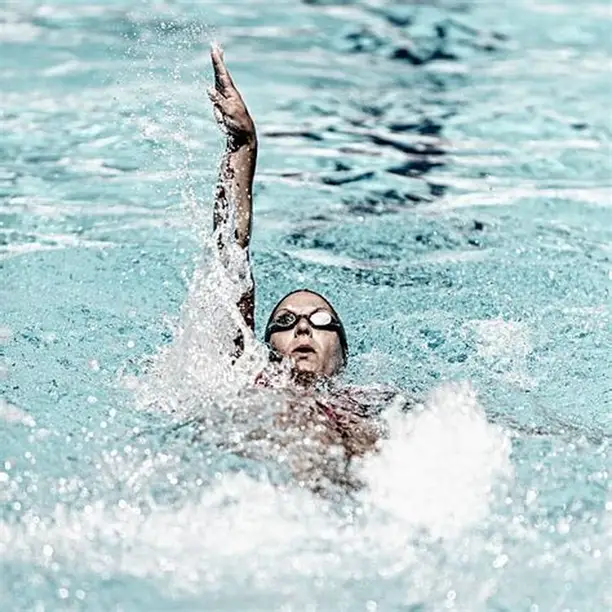 Benefits of Practicing Backstroke
Benefits of Practicing Backstroke
Engaging in regular backstroke swimming delivers multiple health and performance advantages. First, it strengthens the upper body. The continuous arm movement targets the latissimus dorsi, deltoids, and triceps. Each stroke pulls water backward, building muscular endurance over time. Second, the core works hard to maintain a horizontal position. Swimmers must engage abdominal and lower back muscles to prevent hip drop and ensure smooth rotation.
Third, backstroke enhances cardiovascular fitness. Like other aerobic activities, it increases heart rate and lung capacity. A 30-minute session can burn between 300 and 500 calories, depending on intensity and body weight. This makes backstroke swimming an effective tool for weight management and heart health.
Also, posture improves with consistent practice. The need to keep the body flat and aligned translates into better spinal awareness. Over time, swimmers develop stronger postural muscles, which support daily movements on land. Office workers who suffer from rounded shoulders often find relief through backstroke routines.
Furthermore, coordination and timing are sharpened. The stroke requires synchronized arm and leg action. One arm pulls underwater while the other recovers above, and kicks occur rapidly in a steady beat. Learning this rhythm boosts neuromuscular control. Children and adults alike benefit from improved motor skills.
Finally, backstroke swimming supports mental well-being. The repetitive motion has a meditative effect. Stress levels decrease as focus shifts to breath and stroke technique. Many swimmers report feeling calm and refreshed after a session. Hence, this stroke contributes not only to physical fitness but also emotional balance.
How Backstroke Differs from Other Competitive Strokes
Backstroke swimming sets itself apart from freestyle, breaststroke, and butterfly in several key ways. First, body position is completely reversed. While most strokes require a forward-facing, prone position, backstroke is performed supine. This change affects breathing, visibility, and mechanics.
Breathing is easier in backstroke swimming because the mouth and nose remain above water at all times. There’s no need to time inhalation with arm recovery, unlike in freestyle. This freedom reduces fatigue and allows longer swim durations. However, some swimmers struggle with water splashing into the ears or eyes during kicks.
Starts and turns also differ significantly. In backstroke, swimmers begin in the water with hands gripping starting blocks. They push off on their backs rather than diving headfirst. Underwater dolphin kicks follow the push-off, up to 15 meters before surfacing. During turns, swimmers perform a flip turn while maintaining back alignment. Touching the wall with any part of the body is required before rotating.
Arm movement shares similarities with freestyle but occurs in reverse. The hand enters the water pinky-first near the hip, then extends overhead. The pull follows an S-shaped path beneath the body. Recovery happens above the surface with a straight or slightly bent arm.
The kick remains a flutter kick, like freestyle, but executed on the back. Fast, small-amplitude kicks provide propulsion and stabilize the hips. Core engagement prevents leg sinking, which can slow progress.
Unlike breaststroke, there are no glide phases. The motion is constant and flowing. Compared to butterfly, backstroke demands less upper-body power but more consistency. These differences make backstroke swimming both accessible and technically rich.
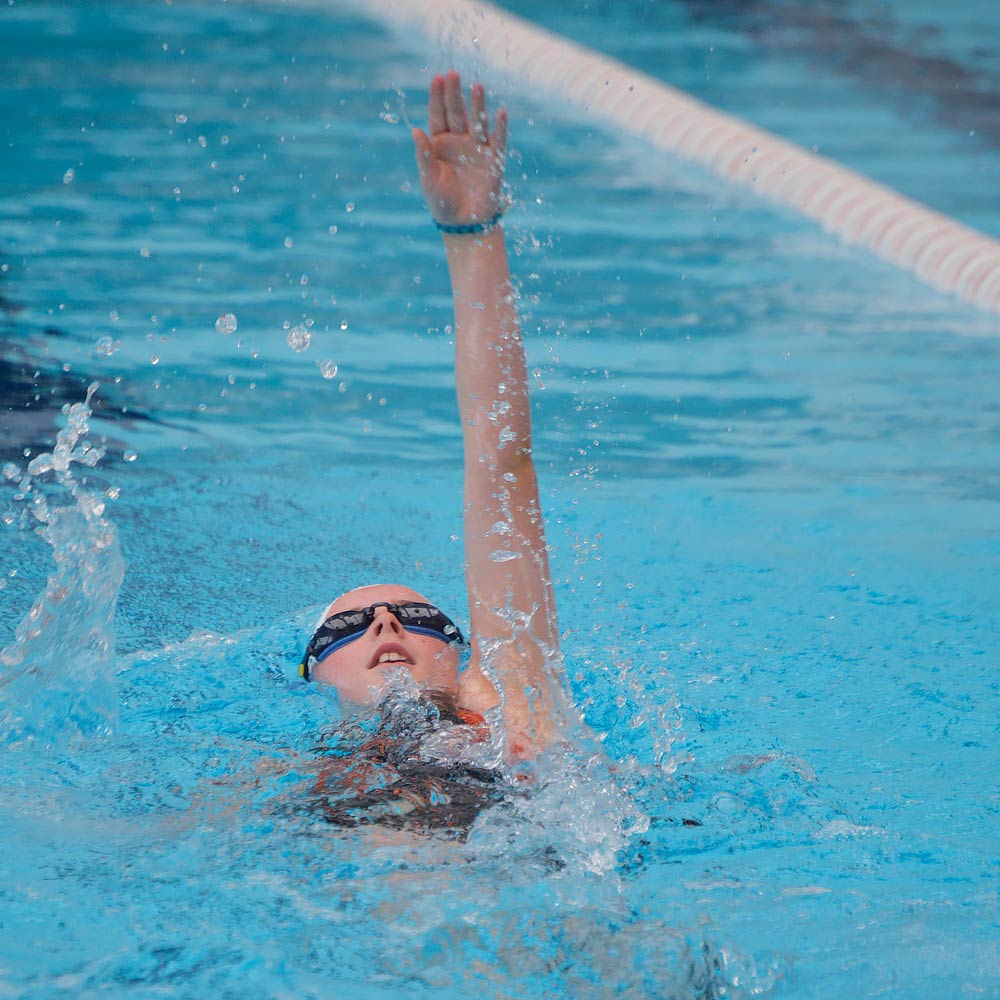 Essential Techniques for Effective Backstroke
Essential Techniques for Effective Backstroke
Mastering backstroke swimming involves breaking down each component into precise actions. Start with body alignment. Keep your head still and relaxed, with ears submerged and eyes looking upward. Let the water support your spine. Avoid lifting your chin, as this causes hip drop and drag.
Next, focus on the arm stroke. Begin the pull with one arm extended fully above the head. Enter the water pinky-first at shoulder width. Then, press your palm outward and downward in a slight S-curve. Pull past your hip before exiting thumb-first. Simultaneously, the opposite arm recovers above water, rotating from shoulder to hand.
Hand entry timing is critical. One hand should enter the water just as the other passes the hip. This creates continuous propulsion. Practice drills like catch-up stroke to refine timing. Use video feedback to check form.
The kick drives momentum from the hips, not the knees. Initiate movement from the core and let it flow down through the legs. Keep feet pointed and ankles relaxed. Small, rapid kicks work better than large ones. Aim for six beats per cycle (three per arm).
Rotation adds efficiency. Your body should roll slightly side to side with each arm pull. This reduces resistance and increases reach. Limit rotation to about 30 to 45 degrees. Too much rolling disrupts balance.
Breathing stays natural due to face exposure. Still, stay mindful of rhythm. Exhale slowly underwater and inhale during recovery. Some swimmers count strokes to maintain consistency.
Use tools like kickboards or pull buoys for isolated practice. Buoys between the legs help isolate arm technique. Kickboards held behind the head improve leg strength. Drills build muscle memory and correct flaws early.
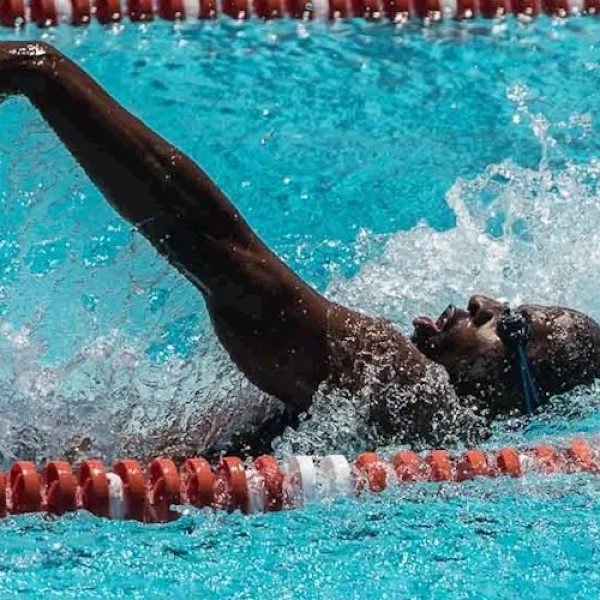 Training Tips to Improve Your Backstroke Performance
Training Tips to Improve Your Backstroke Performance
Improving backstroke swimming requires structured practice and attention to detail. Begin each session with a warm-up. Swim 200 to 400 meters using easy backstroke or mixed strokes. This prepares muscles and joints for more intense effort.
Incorporate technique-focused sets. For example, swim four x 50 meters with specific goals: one set for high elbow recovery, another for strong catch phase. Rest 20 seconds between lengths. Focus on one element at a time.
Build endurance gradually. Increase distance weekly. Start with 8 x 25 meters and progress to 4 x 100 meters. Maintain steady pace throughout. Use interval training—swim fast for 25 meters, rest 15 seconds, repeat.
Speed work develops race readiness. Include sprint sets like 6 x 25 meters at maximum effort. Recover with 30 to 45 seconds of rest. These bursts train fast-twitch muscles and improve turn explosiveness.
Practice starts and turns regularly. Perform 10 to 15 wall touches focusing on flip technique. Push off in a tight streamline and add three to five dolphin kicks underwater. Break the surface smoothly before resuming stroke.
Use fins sparingly to enhance feel for water. Short-blade fins support proper ankle flexibility without encouraging over-kicking. Remove them after drills to re-adjust to normal resistance.
Track progress with timed trials. Test yourself every few weeks over 50 or 100 meters. Record times and note improvements. Celebrate small gains—they lead to big results.
Cross-train on land. Strengthen shoulders, core, and glutes with resistance bands, planks, and pull-ups. Flexibility exercises like shoulder stretches prevent injury. Dryland training complements pool work effectively.
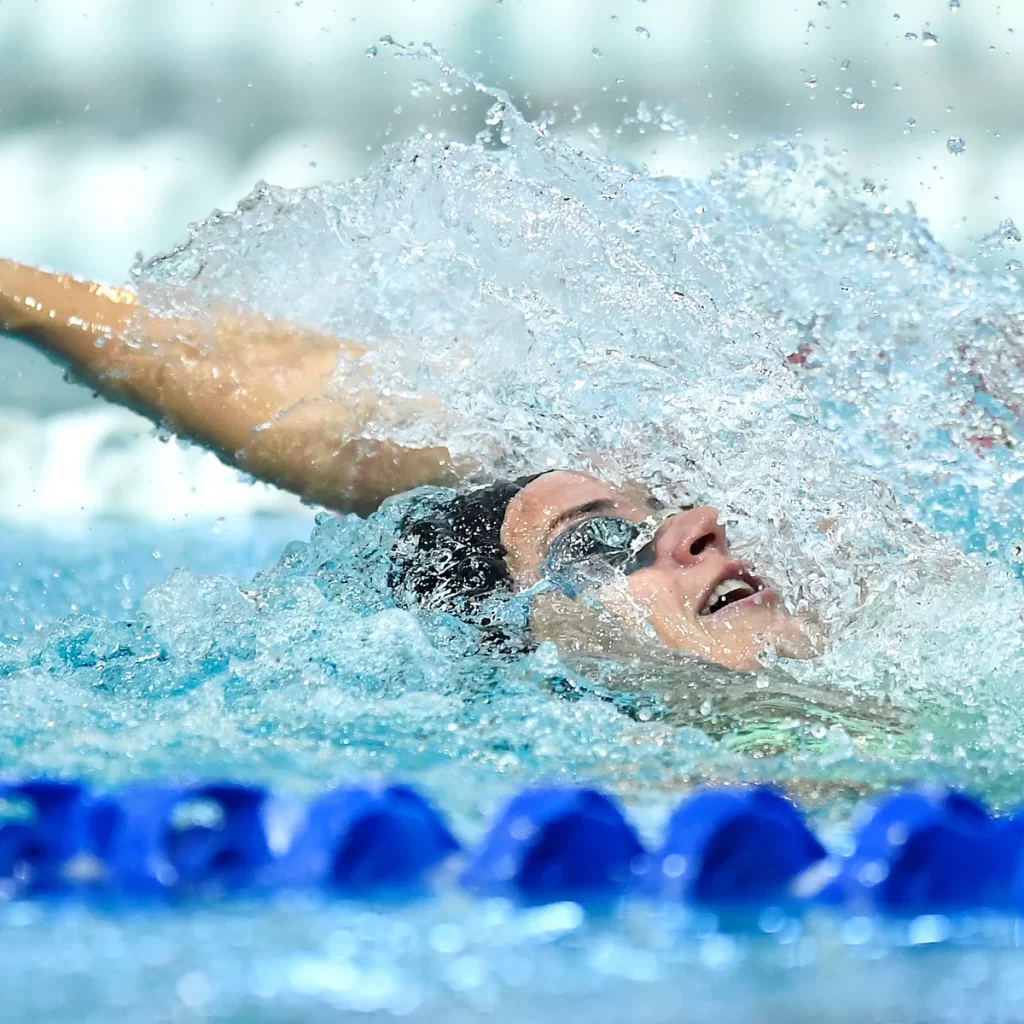 Common Mistakes in Backstroke and How to Fix Them
Common Mistakes in Backstroke and How to Fix Them
Even experienced swimmers make errors in backstroke swimming. One frequent issue is hip drop. When the core relaxes, the lower body sinks, increasing drag. To fix this, engage your abs constantly. Practice kicking with a buoy to reinforce proper alignment.
Another mistake is incorrect hand entry. Slapping the water loudly wastes energy. Instead, enter pinky-first with a clean, quiet motion. Drill this by slowing down and focusing on fingertip placement.
Over-rotating the body reduces efficiency. Some swimmers twist too far, causing imbalance. Limit rotation to a moderate degree. Imagine a line running down your spine—keep it close to vertical.
Weak kicks slow overall speed. Kicking from the knees instead of hips limits power. Strengthen the connection by practicing flutter kicks on your back with hands at your sides. Keep legs straight but not locked.
Poor timing between arms breaks rhythm. Gaps in propulsion occur when both arms are recovering or pulling simultaneously. Use metronome apps or count strokes to synchronize movements.
Lifting the head distorts body position. It raises the chest and drags the hips. Keep your head neutral, ears in the water. Align your spine from tailbone to skull.
Misjudging walls leads to disqualification in competition. Swimmers sometimes forget to touch with some part of the body during turns. Practice flip turns repeatedly until muscle memory takes over.
Lastly, neglecting underwater phases wastes potential. After push-offs and turns, many swimmers surface too soon. Stay submerged for up to 15 meters using dolphin kicks. This faster segment boosts race times.
Frequently Asked Questions (FAQ)
Q: Do I need goggles for backstroke swimming?
Yes, goggles protect your eyes from chlorine and improve underwater vision during turns.
Q: Can beginners learn backstroke easily?
Absolutely. The ability to breathe freely makes it one of the easiest strokes to start with.
Q: How long does it take to master backstroke swimming?
With regular practice, basic proficiency takes 4–8 weeks. Mastery requires months of focused training.
Q: Is backstroke good for back pain?
Yes, the neutral spine position supports the back. However, consult a doctor if you have existing conditions.
Q: Are there different types of backstroke?
No, the technique is standardized in competition. Variations exist in learning stages or recreational swimming.
Q: Can I swim backstroke in open water?
Yes, but be aware of surroundings. It’s useful for sighting since your face stays above water.
Q: What equipment helps with backstroke training?
Pull buoys, kickboards, fins, and snorkels are all beneficial for skill development.
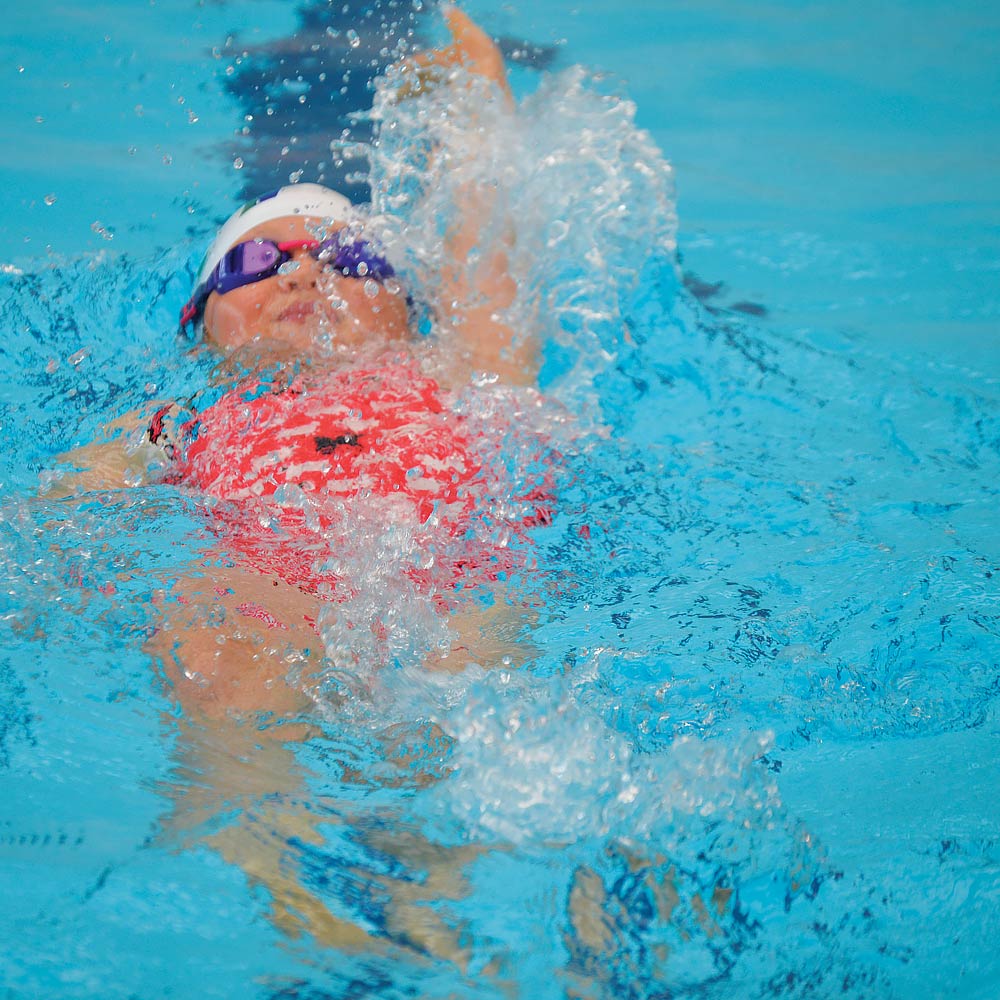 Final Thoughts on the Value of Backstroke
Final Thoughts on the Value of Backstroke
Backstroke swimming remains a vital and rewarding discipline within aquatic sports. It offers a rare combination of accessibility, fitness benefits, and competitive depth. Whether you’re rehabbing an injury, training for a triathlon, or simply enjoying lap time, backstroke swimming enhances both body and mind. Its unique mechanics challenge coordination while supporting joint health. With consistent practice, anyone can improve form, speed, and confidence in the water. As a foundational stroke, backstroke swimming deserves a permanent place in every swimmer’s routine.